Adventures in Fushimi ward, Story 1: “Kamikakushi”
If you truly love something, it’s easy to lose yourself in it.
Or so I told myself as I biked back to the dormitories at 10 at night, after a long day of getting lost purposefully to great avail. As to why I had done it, that was the simplest part: to learn a little more about this city I love and see places I hadn’t yet seen.
The story behind this desire, though, is a much longer one than that seemingly simple answer.
My day, last Sunday, started out well enough. The night before, I had asked a friend whether he wanted to go to one of the nearby temples, to which he had responded that he had made other plans. In fact, he said, he really wanted to go to Fushimi Inari with me, but it would have to wait.
The funny part was: I hadn’t even asked him about Fushimi Inari, which made me think: I should go to Fushimi Inari. Seeing as it was past midnight, though, a search through the house to find someone else to go with seemed futile, so I put off my search until morning….
Well, afternoon, technically. I woke up at noon and, after taking a shower and grabbing something to eat, I started my search for a travel companion.I went upstairs first, and found one of the students cooking her lunch. However, she needed to study and she didn’t know anyone who was still there. I frowned at this and went downstairs, asking another friend whether she wanted to go.
However, she was feeling sick, and I was feeling the emptiness of the house when another friend passed by and I asked her. Her name was Shifra, and the main reason I knew her was because I had agreed to teach her go and shougi. She agreed, and after I told her we could go in 15 minutes, she immediately left for her room and got ready.
Since Fushimi Inari, unlike the temples I wanted to go to, is a Shinto shrine complex in the far southern ward of town, not to mention the fact that I had left my bike somewhere the night before, I had to devise a special mode of transportation to get to our destination.
And so it was that after a shortcut, a short wait for a train, a change of trains, a subway ride, a change of subways, and a short train ride, we arrived at Fushimi Inari shrine.
For those who don’t know, in the Japanese pantheon of Shinto, Inari is the kami (spirit) or rice, fertility, and prosperity. Seeing as those have been important to Japan since its inception centuries ago, it only follows that Inari is one of the foremost kami in Shinto.
That said, Fushimi Inari is probably the largest and most famous of Inari’s shrines scattered here and there throughout Japan. If you’ve seen Memoirs of a Geisha, you might remember the red torii (arches) the main character runs through at one point in the movie. That was actually shot at Fushimi Inari in Kyoto (picture to left).
When we arrived at our destination, as soon as we stepped out at the station, we were greeted by a huge, looming, red monstrosity of an arch.
“This is kind of tacky,” Shifra noted, regarding the arch skeptically.
I laughed and replied, “Yeah, but it’s not one of the real arches, this thing is made of concrete, it’s for tourists.”
“You’re right. Let’s continue to our true destination!” she replied, and with that, we began our trek to the shrine itself.
We walked up to the main gate, where shopkeepers were lined up in true Japanese fashion, selling everything from small red arches to write dedications on and place at the shrine to fox masks for children.
After a quick peek inside, we continued on our way to the shrine.
In the outer complex, we passed by one of the daily rituals of the Shinto priests and watched for a few minutes as a businessman in the seats was offered a bamboo shoot to place on the altar, presumably as an offer to Inari for his venture.
Because we were watching from afar, and because we couldn’t take pictures, we turned to face the facade of the first arches to the inner shrine.
A mid-sized path greeted us, and we started towards what I thought at the time was our final destination.
We reached the inner sanctuary without incident and stayed there for about 15 minutes while I strolled around the sanctuary and took pictures and Shifra found a place to sit (picture left).
Now, in all truth, Fushimi Inari isn’t just one shrine to Inari, it’s literally hundreds of shrines to Inari and other kami. That said, I had no idea about this fact until we departed on one of the side-roads from the sanctuary.
Through another red torii to the left of where we were, a path twisted away from the “main attraction” and towards the other side of the mountain.
To say that the rows of arches at Fushimi Inari was the main attraction is like saying a single ride at Disneyworld is its main attraction. Thus, especially because we were already awed, what followed next was surreal.
We moved on, slowly but surely, until reaching a very small shrine to our left after an intersection of arches (right). At this point, Shifra asked whether we should continue down the beaten path or take a smaller path to the right. After only a second’s hesitation, I decided on the road less traveled, and she agreed.
A flight of steps and ten minutes later, we saw a house on the ridge. Obviously, some old priest lived there who took care of the smaller shrine next to his house, but it seemed dream-like that people actually lived here in regular houses and devoted their lived to this pristine place.
The couple of minutes spent here passed quickly, but what met our eyes next was a bamboo grove growing to the right of our path, down the mountain. Although it was spring, a glance upward revealed that whenever the wind blew, bamboo leaves fell from high above our heads. Try as I did to actually get a picture that caught this, I couldn’t, and after a couple of tries we walked farther down the path.
Then came my first decision to get lost that day.
In the green grove, the path again split in two, this time one leading to a cluster of shrines. We took this path, but when leaving, we decided to go up a much smaller path leading to the side.
After walking a while, we stumbled upon what looked like farm houses and cleared land. Keep in mind, this is Kyoto, so it was surprising in that there were farm houses within Kyoto at all, which doesn’t even have lawns in the city proper because everything is packed so tightly.
So we met up with what seemed like a regular farm road; small, narrow, and twisting. We followed it the right, up past more small farms. I, infatuated with my new camera, took picture after picture until Shifra stopped me and pointed to a small red torii between two farms we had passed. We puzzled at how to reach it for a moment before back-tracking and entering through another archway next to what looked like an old lady’s house.
We passed by laundry hung out to dry and I slipped and cut my foot on some moss, but we reached the backwater shrine. Fittingly enough, it was probably the prettiest shrine we had seen so far, at least as far as its simplicity and placement. Some blue flowers grew around the arches leading to the sanctuary, and the old lady whose house we passed planted flowers right next to the arches (right).
Our hike continued as we weaved through the countryside, far-removed from any civilization that I had met so far, before reaching what seemed to be a regular high school tennis court and a road leading the direction we needed to go to get back to the international house before dark.
After some serious deliberation over whether it would be best to continue our exploration (the paths had lights strung together above them), we decided that we had seen the bulk of what we could see that day, and, partially because I had literally worn holes in the sides of my feet with my sandals, we continued down the larger road back into civilization.
It took another hour or so to get back to the entrance, at which time, we were chatting about exactly how wonderful an experience it was, and how we’d go back again and take the paths we hadn’t yet traveled.
Then we realized how hungry we were.
A quick glance at the surrounding of the station we would take back home revealed no restaurants, and both of us were starving. We met our stomachs halfway by buying a snack at the local convenience store and then getting on the train to go back to the western ward of town we knew and getting something to eat around there. So we bought our snacks and returned the way we came.
At this time, I could say we got lost again, but truth be told, it wasn’t really getting lost. It was more honing in and circling a place I knew was there before actually finding it.
And, thus, we found my favorite okonomiyaki restaurant in Kyoto so far.
Okonomiyaki is a pancake-looking dish made of eggs, cabbage, meat, and various other ingredients, cooked in front of the customer on a hot table-top, much like what Americans are used to with the fancy Japanese steak restaurants. This, however, is much more affordable and much more filling, in my opinion.
We ended our trip with that, but as we walked home, I remembered a problem that I hadn’t solved earlier: my bike was still left at school, and my friend’s bike, which I had borrowed because of that, was still at the karaoke place I had taken it a couple of nights before. After getting home and pondering this problem for a couple of minutes, I put on some Ratatat on my iPod, turned it up on my new earphones, and decided to take a late-night hike to retrieve my friend’s bike before she would use it for school the next day.
This time, I actually put on shoes because my feet couldn’t take any more sandals.
Walking past Ninna-ji, a famous temple about 15 or 20 minutes away on foot, I decided to turn right. I knew the basic direction of the karaoke place, and truthfully, if there were anywhere I trusted to walk at night in the world, it would be Kyoto, especially the richer districts like these.
With that in mind, I took one of the longest solitary walks of my life to the karaoke place. I got lost, learned a lot about the way the streets in Kyoto are laid out, and finally found my way again before finding the bicycle and going the regular way back home.
However, it didn’t seem right to go straight back home, at least not the regular way. So after seeing my university to my right and the possibility of an interesting experience to my left, I followed my instinct and turned left, down a hill.
Five minutes of exhilarating ride later, I found myself at the place where I had originally turned right on my walk earlier ot get lost in the first place. I laughed, realizing that I had found a shortcut back home rather than done myself in with my own curiousity.
Finally, about 7 minutes later, I reached the I-house, parked my bike in the back, told my friend her bike was back (to her amazement), and began to read my new book.
And life was good.

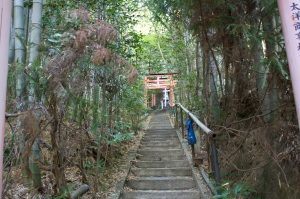
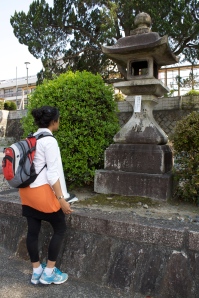
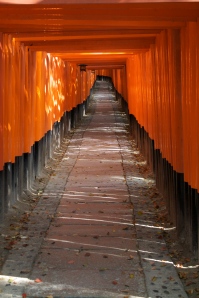
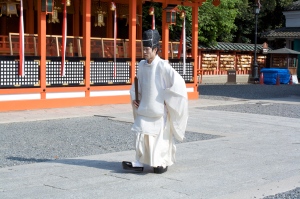
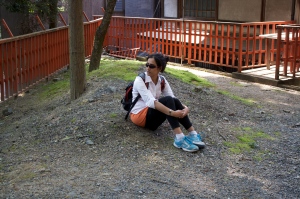
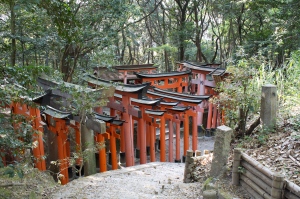
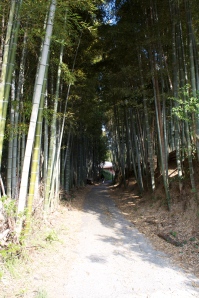

I love me some Ratatat. The end.
Oh, and akinotsuki needs some lovin’ (or at least a link to this blog).
Same for TSAE.